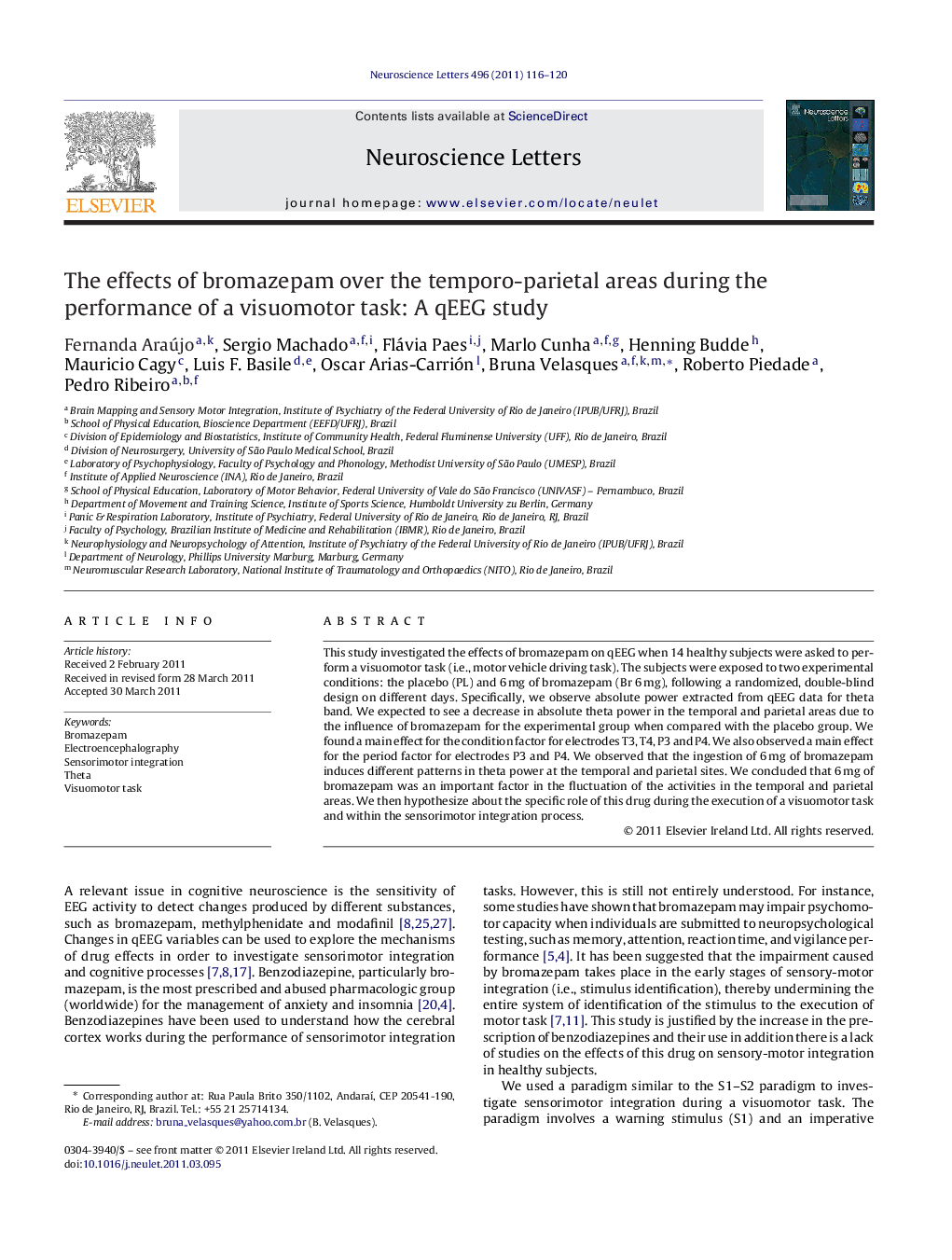| Article ID | Journal | Published Year | Pages | File Type |
|---|---|---|---|---|
| 4345197 | Neuroscience Letters | 2011 | 5 Pages |
This study investigated the effects of bromazepam on qEEG when 14 healthy subjects were asked to perform a visuomotor task (i.e., motor vehicle driving task). The subjects were exposed to two experimental conditions: the placebo (PL) and 6 mg of bromazepam (Br 6 mg), following a randomized, double-blind design on different days. Specifically, we observe absolute power extracted from qEEG data for theta band. We expected to see a decrease in absolute theta power in the temporal and parietal areas due to the influence of bromazepam for the experimental group when compared with the placebo group. We found a main effect for the condition factor for electrodes T3, T4, P3 and P4. We also observed a main effect for the period factor for electrodes P3 and P4. We observed that the ingestion of 6 mg of bromazepam induces different patterns in theta power at the temporal and parietal sites. We concluded that 6 mg of bromazepam was an important factor in the fluctuation of the activities in the temporal and parietal areas. We then hypothesize about the specific role of this drug during the execution of a visuomotor task and within the sensorimotor integration process.
► 6 mg of bromazepam affects the multisensory integration over temporo-parietal areas. ► Decrease in theta power for Br 6 mg represents the encoding of sensory integration. ► Bromazepam impairs stimulus detection and produces deficit in attention. ► 6 mg Br affects the first stage of the processing of information.
